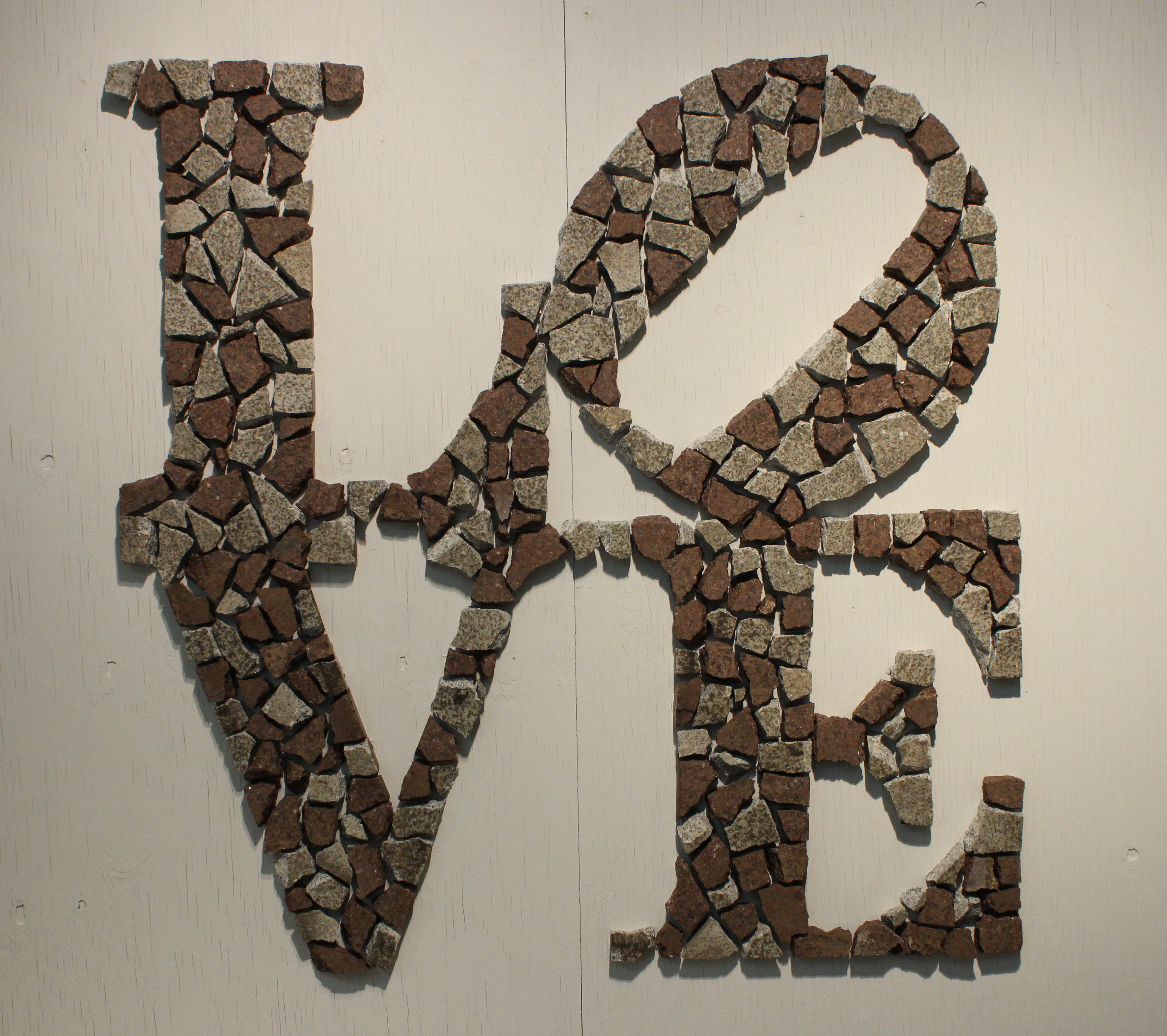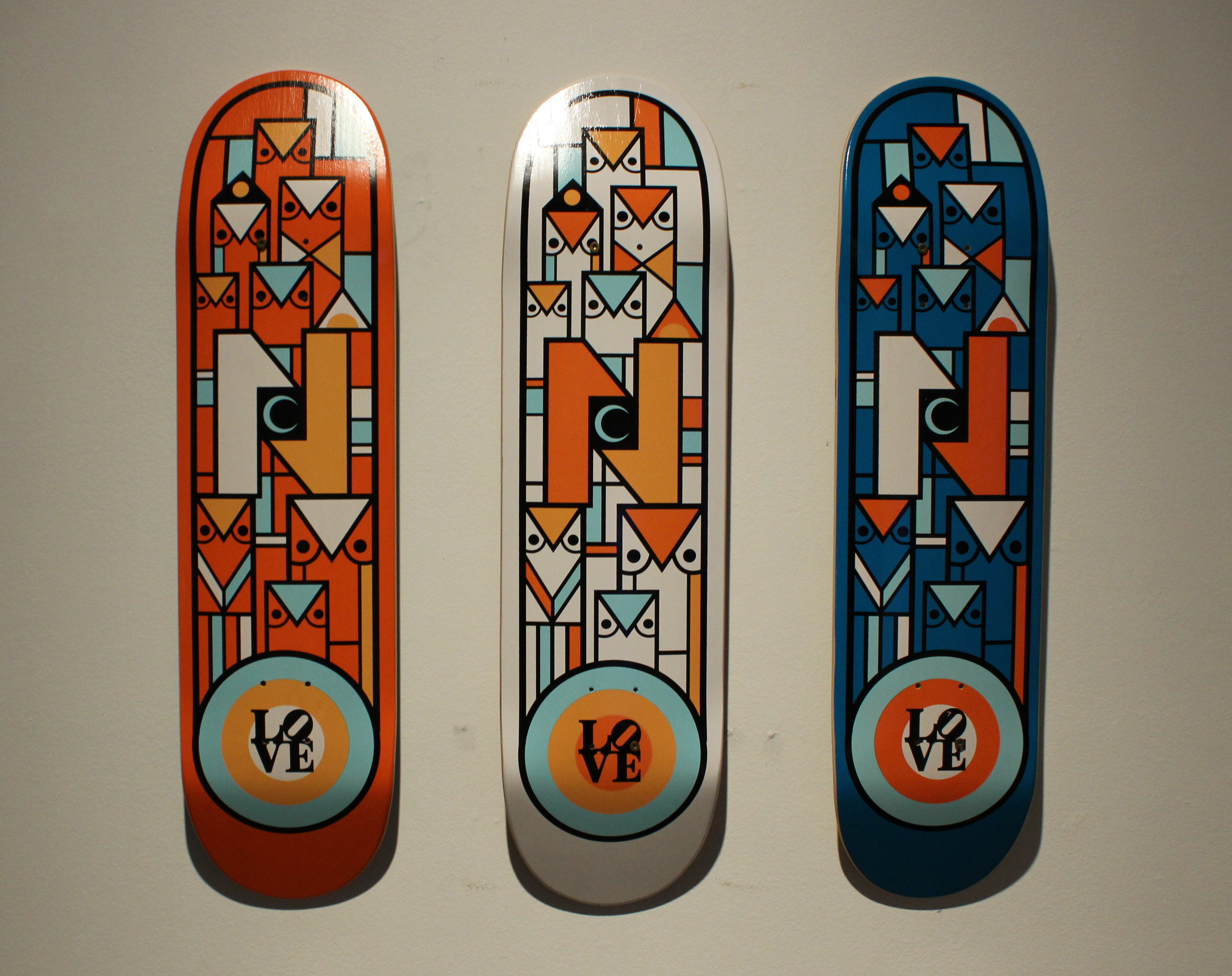
Looking back on Philly’s LOVE Park and turning Drexel’s gallery into an interactive skateboarding retreat
Above: Brian Panebianco. Photo by Chris Mulhern.
LOVE Park in Philadelphia has long been one of the city’s big downtown attractions, and anyone who has spent some time there also knows it to have been a veritable paradise for skateboarders too. Aside from the iconic sculpture by Robert Indiana that gives it its common alias (the park’s actual, practically unused, name is JFK Plaza), the stone slabs and tiered construction of the park made it perfect for skating. Just about any visit to LOVE Park would have yielded a revolving door of skateboarders and videographers darting about amidst the unmistakable sounds of wheels against granite… but now this haven is under construction, and its future doesn’t appear to include these four-wheeled fixtures.
Enter Drexel University’s Leonard Pearlstein Gallery and its current exhibition, “Philly Radness,” by Eric Schoenborn and Ed Selego, in collaboration with Nocturnal skate shop. (Full disclosure: Schoenborn is the former creative director for Knight.) The white-walled art space in West Philly has been converted into an indoor skate park as an iteration of “Phenomenal Radness,” which debuted in the Miami Design District for Go Skateboarding Day 2013.

Reclaimed stone tiles from LOVE Park on plywood by Pat Heid.
Upon entering the gallery, one of the first–and largest–pieces aside from the interactive skating area itself, is a tribute to Philly’s late, great skating paradise by Pat Heid. The word ‘LOVE,’ in its square layout, complete with an off-kilter letter ‘O,’ hangs on the wall facing the door, pieced together with bits of the same oft-ollied granite that once formed the foundation of LOVE Park.
Wandering further into the space, many photographs and a couple of videos by Chris Mulhern cover the walls as a look back on the history of skating in LOVE Park. There are pictures of skaters in the sun and in the snow, action shots of jumps over trash cans and street barriers, and even one image of a police officer triumphantly holding a skateboard aloft. Perhaps in a past life, he was a skater too. Another corner presents us with some Nocturnal skateboard designs illustrated by Don Pendleton, and a few used decks just for good measure.

Nocturnal skateboard designs by Don Pendleton.
Further in, however, is where the real fun begins. The focal point of the show is the projection-mapped generative installation that is part video art, all skate park. Multimedia artist Schoenborn and professional skateboarder Selego join forces to merge the worlds of visual art and skating. The result is like skateboarding inside of an animated .gif, and the video projections change based on the movements and sounds produced by the participants. It may not be the largest skate park around, but it’s certainly the only one that morphs based on your moves. Skating inside is not required, but is definitely encouraged.
As a skating destination, LOVE Park may be a thing of the past, but its memory is still fresh in the minds of the Philadelphia skateboarding community. Mulhern’s documentation of the beloved spot serves as a piece of history, as well as a primer for skaters and non-skaters alike, while Schoenborn and Selego’s installation provides a temporary skateboarding oasis in the absence of a longtime Philly gathering place. “Philly Radness” will be open through May 22.
Recent Content
-
Artsarticle ·
-
Artsarticle ·
-
Artsarticle ·

